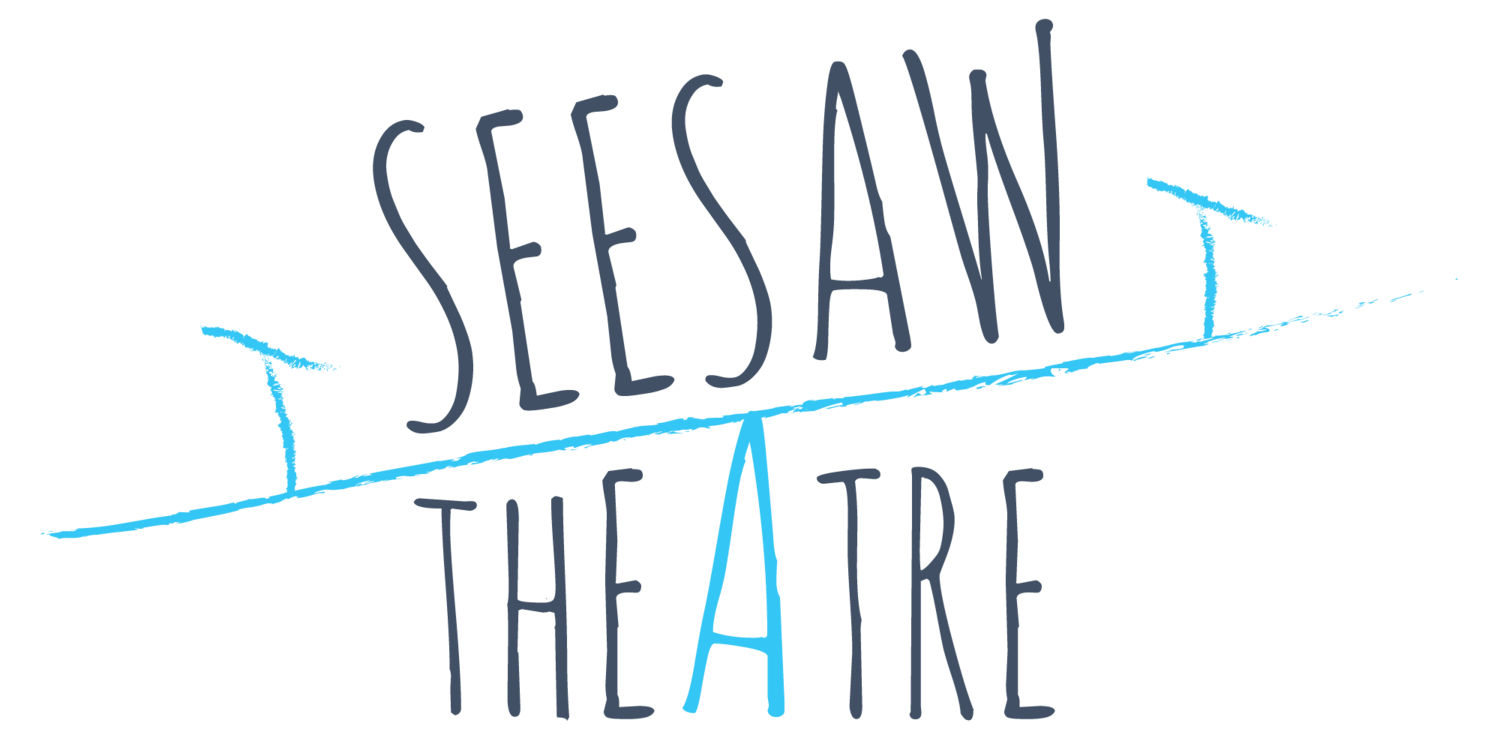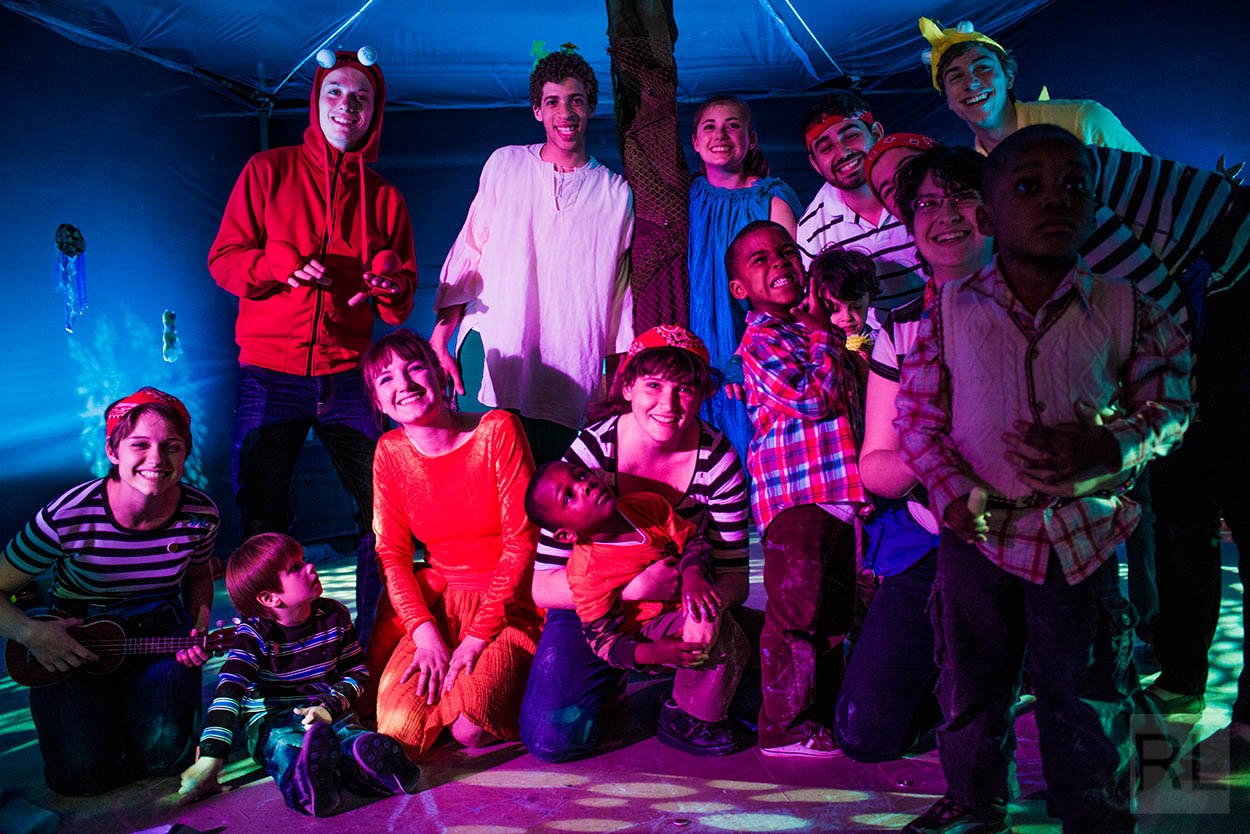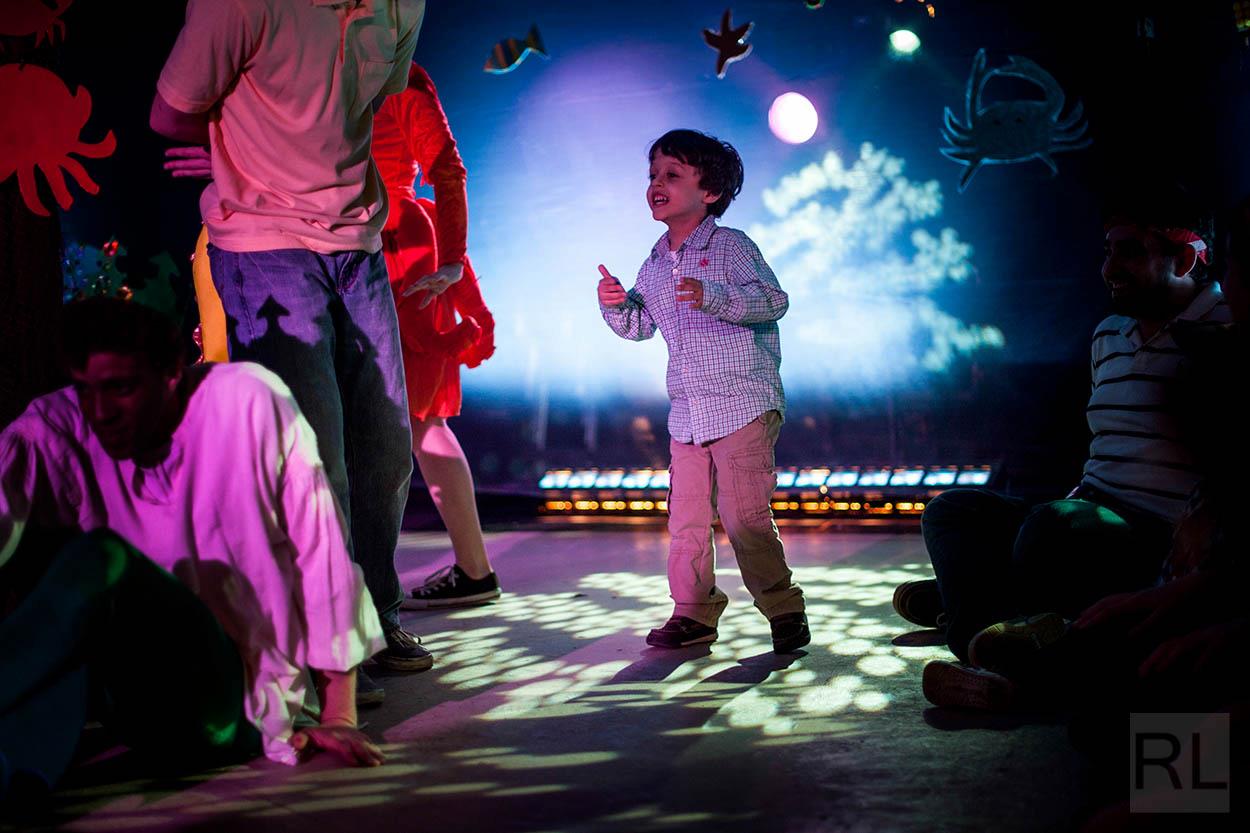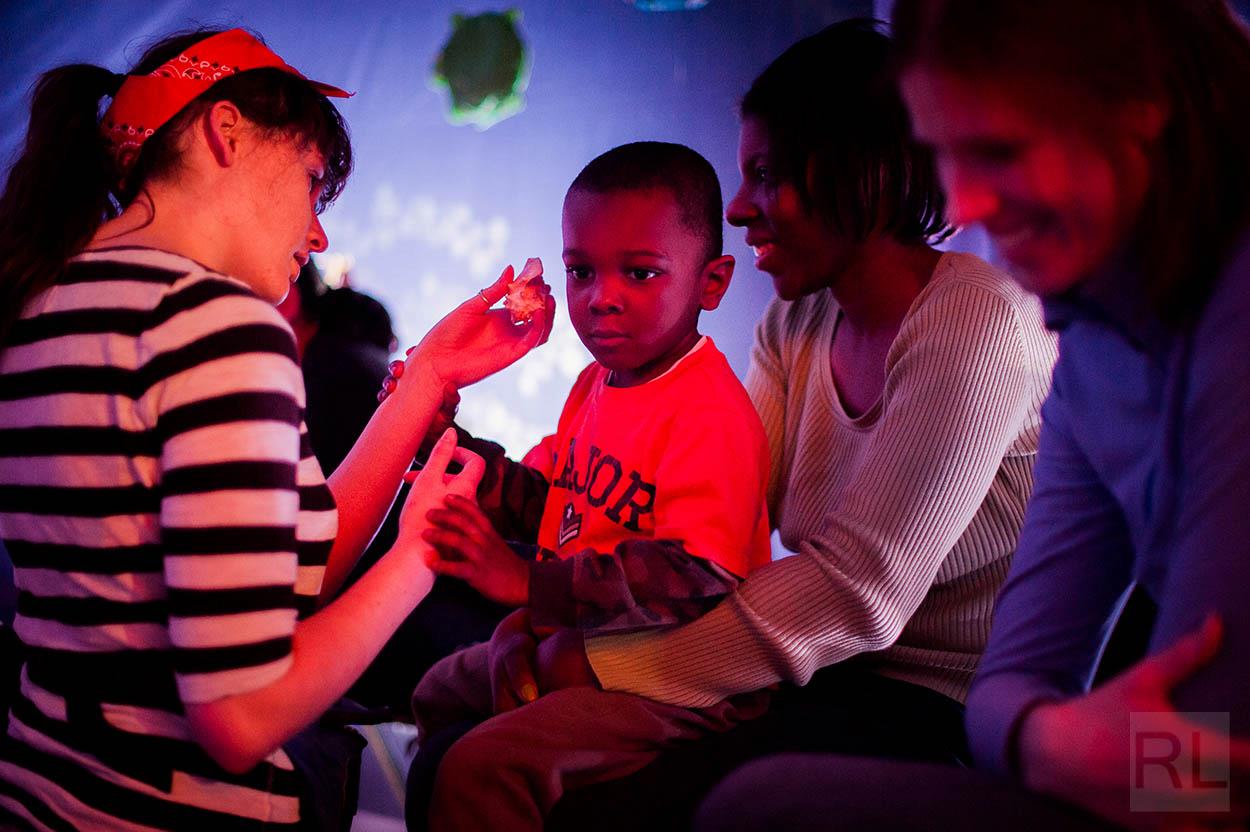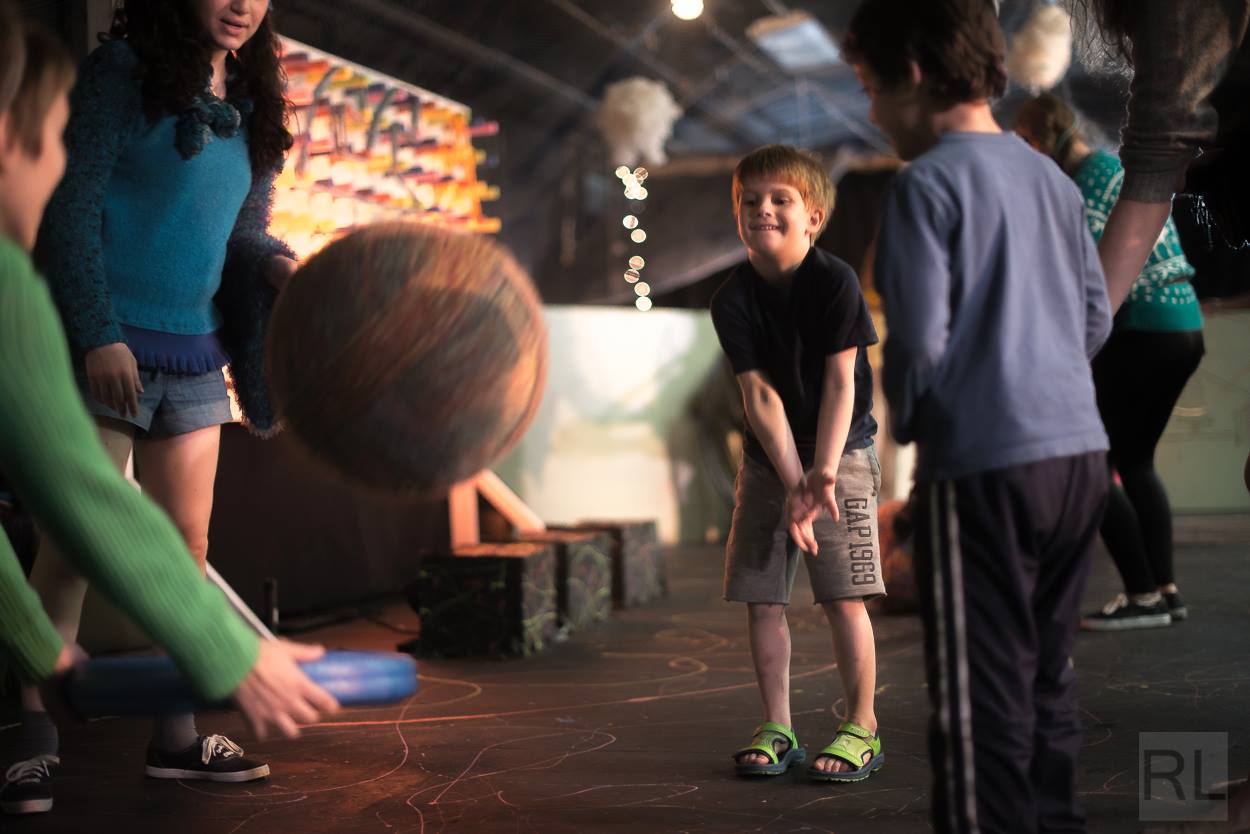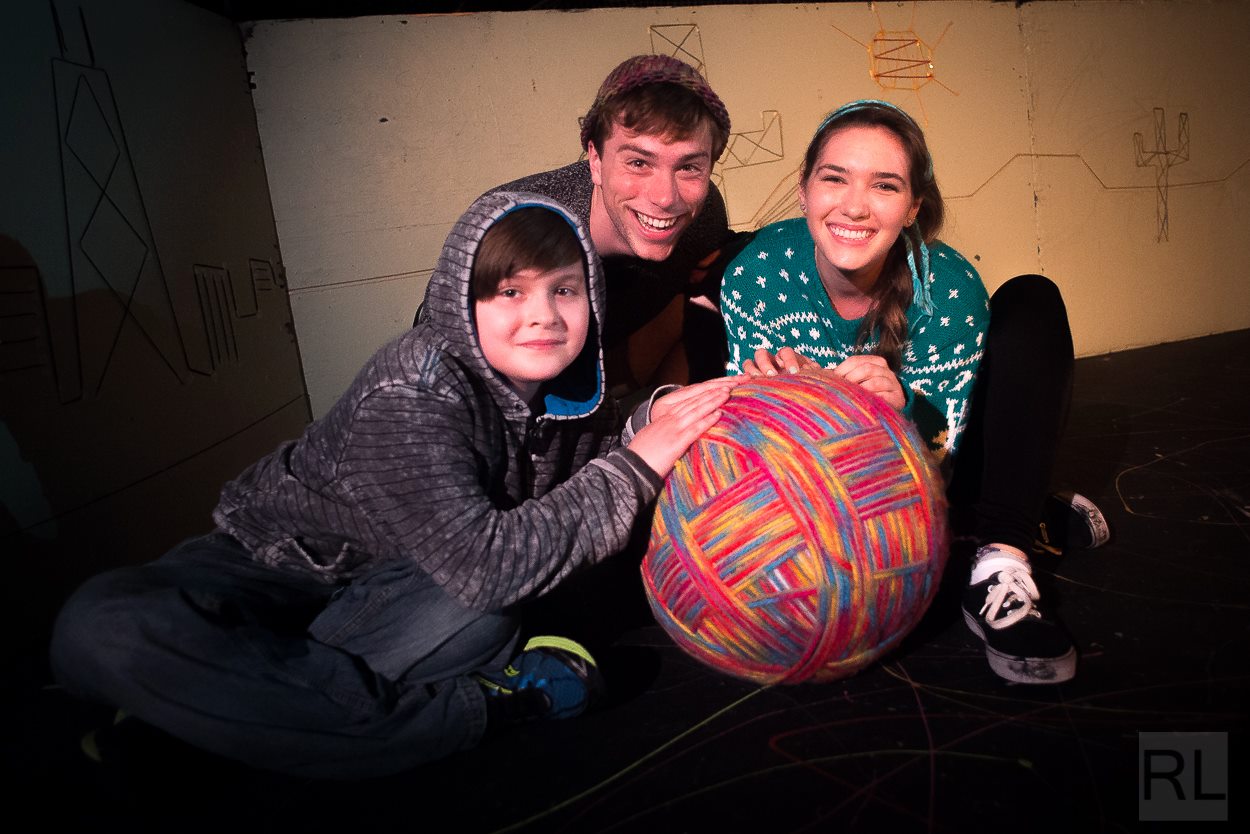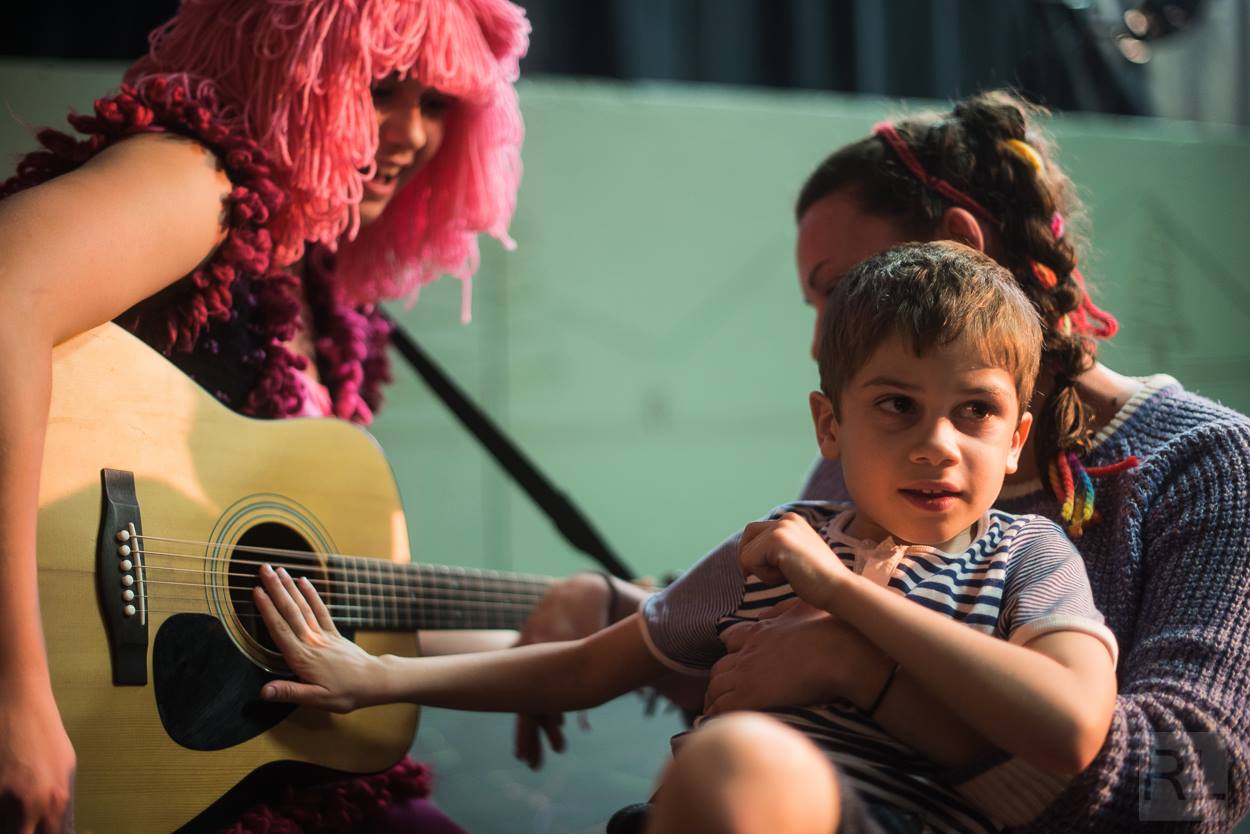First, I would like to introduce myself: my name is Katherine and I am the Research Chair on the board for Seesaw Theatre. This can be a confusing title, as it is not traditional for a theatre board to include a position like this. That being said, the kind of theatre we do is not traditional.
We create sensory, experiential theatre for individuals with developmental differences because we believe that everyone deserves a chance to play in the magical world of theatre. If a traditional theatre setting doesn’t work for some people, then we should change the setting, not the audience.
A second, very important aspect of our work is that it has the potential to have long-lasting (and some research even suggests permanent) effects on our audience members. My position entails understanding these effects, how they fit into the larger framework of the art therapy movement, and how we can maximize our impact.
I’ll start with some basic information about the kinds of developmental differences we work with.
What is Austism Spectrum Disorder (ASD)?
Austism Spectrum Disorder, or ASD, is an umbrella term applied to individuals with a vast array of developmental differences. These differences are primarily characterized by communication challenges. However, the word “Spectrum” is key to understanding ASD: each individual with ASD will have a unique set of characteristics and varying degrees to which these characteristics impair their daily functioning. Those whose characteristics have a limited impact on their daily functioning are referred to as “high functioning”.
Common characteristics of ASD include:
- Social-interaction difficulties (i.e. trouble with eye contact and perspective-taking)
- Repetitive behavior
- Language difficulties (i.e. being nonverbal, repeating words or phrases, speaking in an unusual tone of voice)
- Hyperactivity
- Dislike of change, sometimes called “rigidity”
- Physical challenges (i.e. hearing impairment, immune dysfunction, seizures)
- Irritability, anxiety, or hostility
- Tantrums, self-injury
- Heightened or blunted sensory experience
- Those with a heightened sensory experience may be sensory avoidant, as experiences that may seem normal for a neurotypical individual can become overwhelming for these individuals
- Conversely, those with a blunted sensory experience may be sensory seeking, as experiences that may seem overstimulating for a neurotypical individual may be exciting for these individuals
- High skill level and/or intelligence in one or more specific area (i.e. extremely realistic paintings, detailed knowledge of car mechanics)
What is Asperger Syndrome?
Asperger syndrome is a high functioning form of ASD. Characteristics associated with Asperger syndrome are similar to those discussed above, but there are more specific characteristics that those with Asperger syndrome present.
Common characteristics of Asperger syndrome include:
- Exceptional language skills
- Difficulty understanding and expressing nonverbal communication
- “Robotic” movements or speech (sometimes interpreted by others as “awkwardness”)
- Lack of eye contact
- Difficulty with reciprocal conversation (i.e. a tendency to talk only about oneself throughout the course of the conversation)
- Fixated interest on and skill in one specific subject that is sometimes “unusual”
- Responses to sensory stimuli that are similar to the responses in those with ASD
- Hyperactivity
What is Down Syndrome?
Down Syndrome is a condition in which a full or partial extra copy of chromosome 21 is present in an individual’s genetic makeup, which leads to altered physical and mental developmental processes. Down syndrome is similar to ASD in that all individuals with Down syndrome have a unique set of characteristics and have them to varying degrees.
Common physical traits of Down syndrome:
- Small structure and low muscle tone
- Upward slanting eyes
- Physical flexibility
- Small hands and feet with short fingers, a single crease in the palm
- Flattened facial features
- 40% are born with heart defects
- Hearing or vision problems, along with a number of other possible medical issues
Common mental traits of Down syndrome:
- Slower rate of learning
- Difficulty with complex reasoning and judgment
- A sociable and happy disposition
- Preference for routine and order
- Self-talk as a process for thinking things through
- Anxiety, depression, or OCD
How does ADHD factor into ASD?
Some studies have suggested that up to 30% of individuals with ASD also have ADHD, a rate that is 6 times higher than is found in the general population. A dual diagnosis can make tackling difficulties associated with both more challenging. ADHD and ASD have the common characteristics of hyperactivity and shorter attentional spans, but treatments for these neurological differences are not the same. This presents a problem, and those with both ADHD and ASD are often only treated for one or the other. These neurological differences are also commonly confused for one another, which also presents a problem for implementing appropriate treatments. There is ongoing research about how to address these challenges.
Some confusing terms: Disorder versus Disability versus Difference
- Disorder is the medical term
- Disability is the legal term
- Difference is the social term
Stay tuned for the next installment of "Seesaw Science" to learn more about our audiences and how the work we do caters directly to their needs!
Katherine Seldin
Research Chair
katherine@seesawtheatre.org
References:
"Asperger Syndrome Fact Sheet." National Institute of Neurological Disorders and Stroke (NINDS). N.p., n.d. Web. 10 Nov. 2014.
"Asperger's Syndrome | Learning Disabilities." National Center for Learning Disabilities. N.p., n.d. Web. 09 Nov. 2014.
"Autism Fact Sheet." National Institute of Neurological Disorders and Stroke (NINDS). N.p., n.d. Web. 10 Nov. 2014.
"Autism Spectrum Disorder." NIMH RSS. National Institute of Mental Health, n.d. Web. 10 Nov. 2014.
Brock, Matthew E., et al. "Temperament and sensory features of children with autism." Journal of autism and developmental disorders 42.11 (2012): 2271-2284.
Chapman, Robin S., and Linda J. Hesketh. "Behavioral phenotype of individuals with Down syndrome." Mental retardation and developmental disabilities research reviews 6.2 (2000): 84-95.
"Disorder, Disability or Difference: What's the Right Term? | LD Insights Blog | Blogs." National Center for Learning Disabilities. N.p., n.d. Web. 10 Nov. 2014.
"Facts about Down Syndrome." Centers for Disease Control and Prevention. Centers for Disease Control and Prevention, 20 Oct. 2014. Web. 10 Nov. 2014.
Korenberg, J. R., et al. "Down syndrome phenotypes: the consequences of chromosomal imbalance." Proceedings of the National Academy of Sciences91.11 (1994): 4997-5001.
Myles, Brenda Smith, and Richard L. Simpson. "Asperger Syndrome An Overview of Characteristics." Focus on Autism and Other Developmental Disabilities 17.3 (2002): 132-137.
Shriberg, Lawrence D., et al. "Speech and prosody characteristics of adolescents and adults with high-functioning autism and Asperger syndrome."Journal of Speech, Language, and Hearing Research 44.5 (2001): 1097-1115.
Susan, E. Brysonll. "Epidemiology of autism: prevalence, associated characteristics, and implications for research and service delivery." Autism: The Science of Mental Health (2013): 57.
Taurines, Regina, et al. "ADHD and autism: differential diagnosis or overlapping traits? A selective review." ADHD Attention Deficit and Hyperactivity Disorders4.3 (2012): 115-139.
